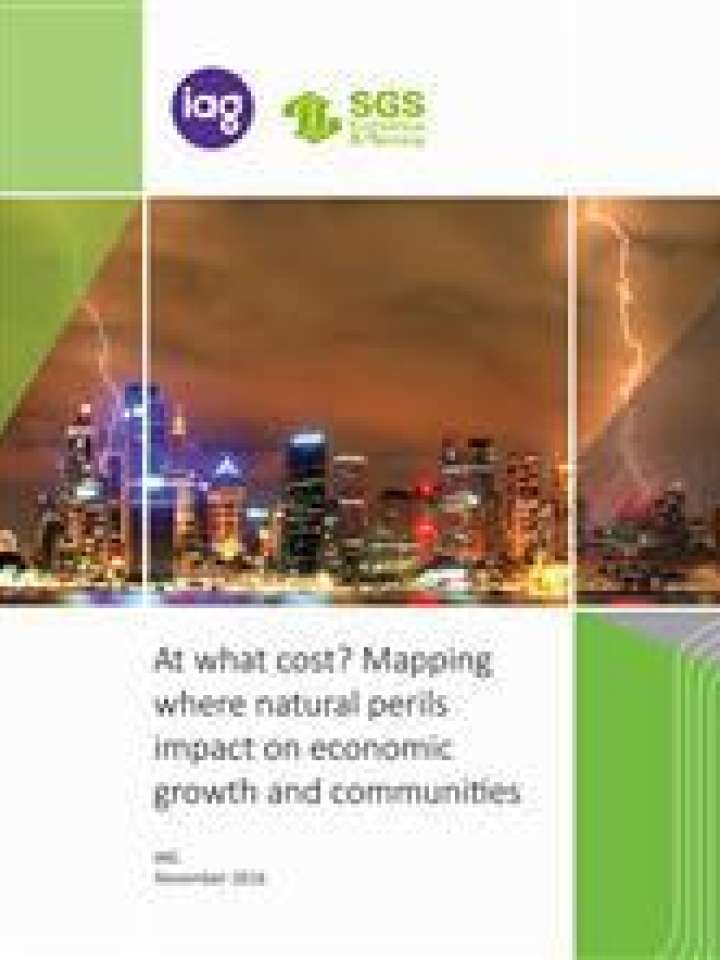At what cost? Mapping where natural perils impact on economic growth and communities
This document presents the first time that the population data and economic activity of all Local Government Areas (LGAs) across Australia have been overlaid with natural hazard risk levels provided by the Insurance Council of Australia (ICA) and IAG. The aim of this report, and its accompanying interactive maps and data files, is to highlight the locations at the greatest risk of natural perils and demonstrate how this risk intersects with economic activity and the communities’ capacity to respond to disasters.
The analysis resulted in the following seven conclusions:
- Areas of key economic importance at high to extreme risk include large parts of the mining industry and knowledge economy hubs in the major Central Business Districts (CBDs).
- $326.6 billion worth of GDP (20.3 per cent of the Australian economy) and 3.9 million people (17.3 percent of the population) are in LGAs with a high to extreme risk of tropical cyclones. Recent tropical cyclones have significantly impacted mineral and agricultural production.
- 28.4 percent of GDP ($425.5 billion) and 24.9 percent of the population (5.5 million people) are living in LGAs with high to extreme flood risk.
- Parts of the Melbourne CBD and its 450,000 workers are at very high risk of flooding. Flooding has recently impacted the transportation network in the Melbourne CBD several times causing economic disruptions.
- The 500,000 workers in the Sydney CBD have experienced transport disruptions caused by storms in recent years.
- LGAs with high and extreme risk of bushfire generated $175 billion (10.8 percent) of GDP and are home to 2.2 million people (9.2 percent of the population).
- LGAs with high and extreme risk of earthquakes generate $853 billion, or 52.5 percent, of the nation’s GDP and house 58 per cent of the population.
Individuals, businesses and the government need to incorporate a heightened awareness of risk into planning and ensure that areas with the highest level of economic activity are protected from natural perils by wise infrastructure investments and mitigation measures.
Explore further
